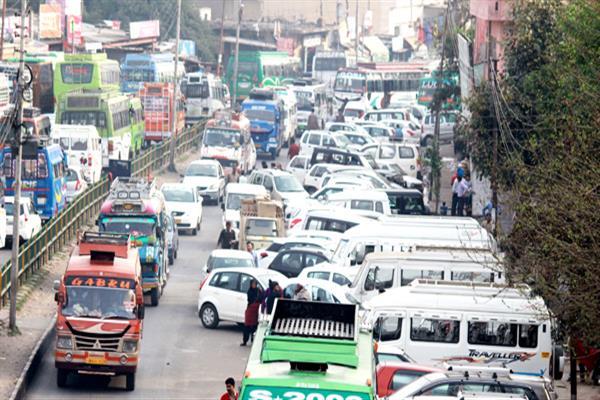By: Javaid Beigh
With the Lok Sabha elections for the last leg of Anantnag Lok Sabha seat being over, focus was briefly shifted to twin sister districts of Shopian and Pulwama that lie on the edge of southern border of Kashmir valley, touching Pir Panjal mountains. The twin districts, which were carved out of “Greater Anantnag” are among the most fertile regions of South Asia and home to most of apple, saffron, rice and milk produced in entire Kashmir valley. These twin sister districts are also home to the greatest Kashmiri Emperor Avantivarman as well as legendary modern-day poets like Mehjoor (Peerzada Ghulam Ahmad) and yet these twin districts are today synonymous with unending violence, hopelessness and despair. Therefore, there is all the more need to humanize the people of both Pulwama and Shopian and present these twin districts to the world in their rich historic glory and hope.
Unlike Anantnag (Islamabad) and Kulgam, which have always been better known among all districts of South Kashmir, Shopian and Pulwama have relatively remained under shadows till these twin districts came into prominence as the nerve center of what is now designated as the “new age militancy” of Kashmir. Pulwama was earlier a tehsil of the greater Anantnag district but was carved out as a separate district in 1979 and Shopian was later carved out as a separate district out of Pulwama in 2007, both for better administrative governance.
Yet, despite their recent administrative origin both Pulwama and Shopian actually have very rich and glorious historical past. Pulwama in particular is home to legendary Kashmiri Emperor “The Great Avantivarman” of Utpala dynasty on whose name the present day Avantipora is also named. Emperor Avantivarman built two magnificent temples in Avantipora, which he designated as the new capital of Kashmir. The first temple of Avantishwar is dedicated to Lord Shiva and the second temple of Avantiswami is dedicated to Lord Vishnu. Both these temples were built in characteristic Kashmiri stone colonnaded peristyle inspired by the temples of ancient Greece and Rome.
The immensely rich and secular history of Pulwama is also reflected by the presence of some of the most revered religious shrines located in this district. Tral is home to more than two hundred-year-old shrine of Khankaq-e-Faiz Panah, which was built in the honor of thirteenth century Sufi saint Hazrat Ameer Kabeer Mir Syed Ali Hamdani (RA), who came to Kashmir from Hamdan province in Eastern Iran for the spread of Islam and left behind a cultural legacy of the Persianization of Kashmiri culture. Pulwama is also home to the famous religious shrine dedicated to Devi Jawala Bhagwati or Kashmir’s “Goddess of fire” at Khrew. Located on top of a hillock, the temple holds an annual fair – “Mela Jawala Mukhi”, which is attended by pilgrims from all over J&K and other parts of India.
Also unknown to most people, Pulwama district is one of the richest and most revenue generating districts in entire J&K state. Whether it is world class saffron from Pampore or apples from Tral, the Pulwama district is an immensely fertile region that also produces most of the rice grown in Kashmir valley, for which it is also known as “rice bowl of Kashmir” as well as producing most of the milk in entire J&K, for which it is also known as “Anand” of Kashmir, named after Gujarat’s Anand district that became world famous for Amul milk and dairy production. Furthermore, cement factories at Khrew contribute nearly Rs. 2000 crore each year to J&K’s economy and is third largest source of revenue for the state after tourism and banking sector.
Shopian on the other hand is an ancient land located strategically on medieval imperial Mughal route that connected Srinagar with Lahore during Mughal rule over Kashmir valley. The name “Shopian” or “Shyupian” as it is pronounced in Koshur language has many mythical origins. Some believe that it is derived from Persian “Shah Payan”, which means “royal stay”, others believe it to have come from Sanskrit “Shin Van” or “snow forest”, indicating Shopian’s high altitude location on Pir Panjal mountain range and its close proximity to “Peer Ki Gali”, the highest point between Kashmir valley and Jammu’s Poonch & Rajouri regions that still houses magnificent ruins of “Mughal Sarai” or royal Mughal rest house.
Unlike Gulmarg, Pehalgam and other tourist locations of Kashmir valley, highly picturesque Shopian is highly underrated even though it is immensely rich in natural beauty spots like Aharbal waterfalls and Kausarnag and Nandansar Lakes. Not many people are aware of this but Shopian is also home to Hirapur wildlife sanctuary, which is much larger than Srinagar’s more famous Dachigam national park. While Shopian is not economically as advanced as Pulwama, its fertile soil is perfect for horticulture and the district is second to none in terms of apple production, both in Kashmir and all over India.
Just like Pulwama, the district of Shopian is also known for its secular character. Shopian is believed to be the entry point from where Hazrat Mir Syed Ali Hamdani (RA) is said to have entered Kashmir valley. There is also a very famous Jama Masjid in Shopian town, which is built in the same architectural style as that of Jamia Masjid Srinagar. There is also an ancient Tirathraj Kapal Mochan Shiv Mandir in Nagbal village of Shopian, which is one of the holiest shrines of Kashmiri Pundits. This is the only place in Kashmir valley, where Kashmiri Pundits can perform their sacred rituals of Upnayana (thread ceremony) and Shraddha (ceremony performed after death).
The story of both Pulwama and Shopian is therefore full of hope amidst an all-pervasive atmosphere of gloom and pessimism. The rich and glorious historic legacy of these twin districts, the immense fertility of the land and humongous economic potential that these two sister districts present to its people, especially its youth is something for which Pulwama and Shopian must be known for rather a place which is synonymous with death and destruction.




